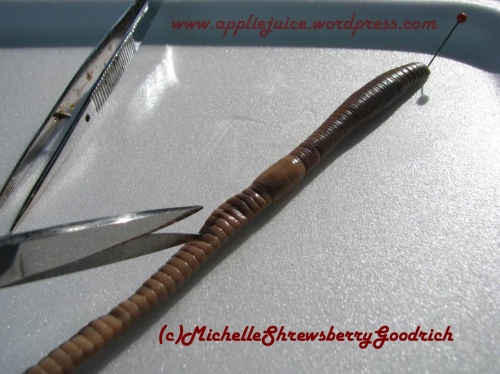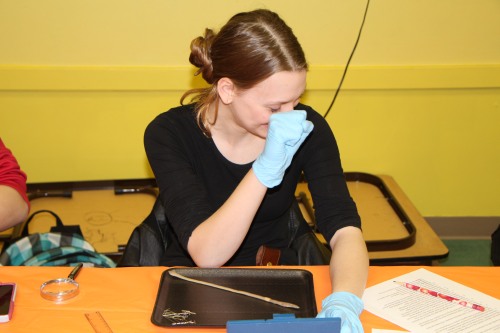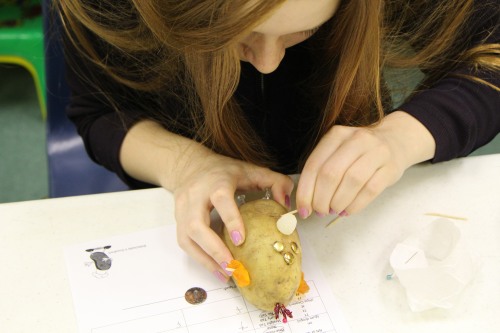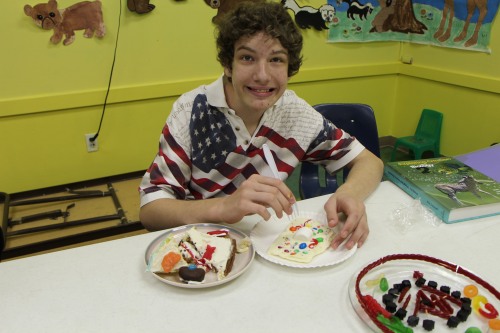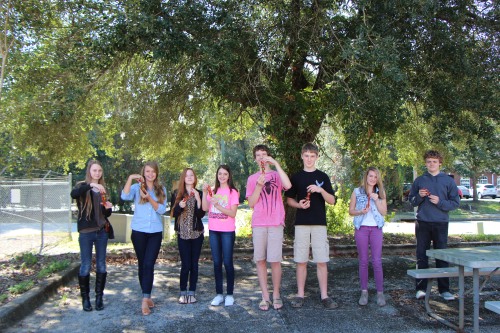This will be linked to the FAQ question post.
Reader’s question: Could you explain what you require in a formal lab report and if you feel that all labs lend themselves to a formal write up?
I have my students write (type) a semi-formal lab report. I do not have them write a hypothesis for Biology, but I do require it for Physical Science and Chemistry. For the conclusion, the students are to write a paragraph (high school level) describing the object they are looking at. For example for the worm, they should write how it breathes, eats, crawls, explain the different systems, etc. Students opinions are not acceptable. I use to say write what you learned and all I would get was, “This was a fun experiment.” or “The worm really stinks.” or nothing at all because the student said he didn’t learn anything new.
Here are links to my handout for each student.
How to set up your lab notebook.
The labs in the textbook are written as if Dr. Wile is talking directly to the student. Therefore; they get a little wordy. I tell my students to write the labs in their own words and cut out the wordiness. For example: Experiment 1.2 Part C
“Step 4: If you were to look at the cells under the microscope right now, it would be hard to find them, because they are almost transparent. To help make them easier to see, you will add a dye to them. This dye is called a stain, and it will help contrast the cells against the light, making them much easier to see. Place a drop of methylene blue stain on the area where you placed the cells. (This stain will not come out of most fabric, so use it with care.)” From Exploring Creation with Biology, 2nd Edition, page 32.
That is what the student needs to hear/read, very important. It is not what they need to write in their lab report. Instead, write this or something like it:
Step 4: Place a drop of methylene blue stain on the area where you placed the cells.
A reader’s question: We will have 24 weeks, meeting weekly for about 45 minutes to an hour. The plan is to have the kids read and do the work outside of class and do the experiments during class. Are there any experiments you would skip or chapters that can be left out or gone over quickly? This is probably my most asked question. 🙂 The list below is what I usually do and it is not meant as a replacement schedule for what is in the book. You as the teacher know what you can and cannot do and what is best for your students.
I do not have students write a lab report for all experiments. Here is what I usually do:
- Experiment 1.1 – Lab was not written up. I made a worksheet the kids filled out at home.
- Experiment 1.2 – Write section C, the cheek cell section. Students do play around with the microscopes to understand it and know the function of each part.
- Experiment 2.1 – written up.
- Experiment 2.2 – written up. We also try to do experiment 3.1 at the same times as 2.2, but only look for the specimens mentioned. 3.1 was not written up. If anything was found it was written in the result section of Exp. 2.2
- Experiment 4.4 – skipped. Cheese is expensive and we couldn’t find anything on it anyway.
- Experiment 5.3 – skipped because we never had time for it in class. We will be doing this for 2016.
- Experiment 8.4 – skipped. I don’t remember why. LOL
- Experiments 8.2 and 8.3 – not written up. Instead, the kids filled out a punnet square worksheet during class time.
- I totally skipped Module 9- I didn’t have time. Some students read this on their own at home. No test or quiz. I may do this module for 2016.
- Experiment 10.1 – skipped. I can never get this one to work.
- Experiment 12.2 – skipped Bug board was done instead. Bugs will be sketched for 2016.
- Experiment 14.1 No lab was written, but they had to make the book with the leaves.
- Experiment 16.1 -skipped only because we cannot see the slide that came with this textbook. I found a great video to watch instead and we just talked about it.
- Experiment 16.2 – skipped because we went on a day-long field trip. The students had a list of items they had to find and identify. For 2016 year we will do the Great Backyard Bird Count in February.
How long does it take to complete the labs? That depends on the lab. A few labs take days and these are done at the students home. Others are very quick, but I can’t think of a specific one at the moment. The time consuming part is sketching and dissecting. If you have a student who hates to sketch, it will be very quick. If you have a student who loves sketching, it will take forever. LOL I schedule at least an hour for the longer labs.
Tip to make labs go quickly and smoothly: Have your students write the labs up through the procedure BEFORE coming to class. This ensures the students have actually read the experiment and they know what to do. The student can use their notes instead of the textbook, which takes up space on the table. I take off points if the lab is not written in advance.
I’ll add more if I think of anything else.
Enjoy the experiments!




 T
T


